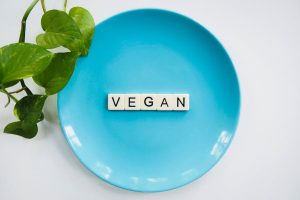What Is Greenhushing and Why Are Brands Doing It?

Greenwashing has been a massive issue in the fashion industry. If you are not sure what this is, it is when a brand claims they are sustainable when in fact, it is not. It is a great marketing ploy to get consumers to buy their products because they are eco-friendly. However, when further research goes into these brands from sustainable associations, it is identified that they are not.
Now, a Green Claims Directive aims to force brands to provide scientific evidence that they are sustainable brands. Due to this, it will put a lot of brands under pressure. They will have the decision to make massive changes to how their clothing line production works. They will also have two decisions. Announce they are not actually a sustainable company or completely change their production and become a sustainable brand.
We all know that many brands support the sustainable future path however, some brands don’t support it. Due to this, the fashion industry is still contributing to greenhouse emissions.
What Is Greenhushing?
Greenhushing is an old term that comes from a sustainable-orientated website called Treehugger. They mentioned this statement back in 2008 when they were referring to companies who won’t communicate their environmental initiatives. The reason why some brands do this is because they do not want to be put in the limelight and be called out for their claims of being sustainable.
Greenhusing is currently happening, as a South Pole (Environmental Consultancy) study identified this. They found that one in four companies set targets to be more sustainable in the future, some of these companies included well-known fashion brands. However, despite their sustainable goals, they did not release these goals as the companies did not want to run the risk of being called out for not being sustainable in certain areas.
Is Greenhushing An Issue For The Industry?
There have been many queries by major sustainable organisations about whether this will have a positive or negative impact on the industry. We all know that greenwashing is a big issue in terms of fashion becoming sustainable. Nevertheless, if some brands don’t share their sustainability goals with the world, it could affect other brands in being more sustainable.
The industry is crying out for major fashion brands to release their sustainability goals to pave the way for smaller brands. That way, smaller brands will follow in the footsteps of the big players in the sector.
Some people believe that greenhushing won’t be an issue with the industry. They care more about those brands that are claiming to be more sustainable when in fact, they are not(Greenwashing).
Now, fashion brands are being more careful with what they claim to do and that is a good thing. It has already occurred with some of the bigger brands in the world. ASOS and H&M have both taken action about their sustainability claims and removed them from their websites.
Greenhushing is believed to have a positive impact on the industry. It indicates how much work needs to be done to be a much greener sector. We all know fast fashion has contributed massively to pollution but, if brands are taking action to reduce their carbon footprint, that is a positive step. Brands shouldn’t greenwash as it just puts things on hold in the industry. If anything, they should Greenhush.
What Can Fashion Brands Do To Be More Sustainable
The reason why some brands are not sustainable is because they don’t know how to be eco-conscious. However, there are quite a few things that a brand can do to be more sustainable. It is an issue that much smaller brands have so we have compiled a list of things a brand can do to make their clothing eco-friendly.
Use Sustainable Materials
Fashion brands usually buy items from production factories and do not design their clothes. However, those who do produce clothes need to ensure they use sustainable materials. It is one of the first things a brand should do when aiming to be more eco-conscious.
A good place to start is by using recycled materials from previously worn/owned clothes. This is highly encouraged by many sports brands such as Puma and Adidas reusing plastics for football kits.
Something else that is advised is to not use materials that are grown with pesticides or harmful chemicals. Instead, brands should look to use biodegradable materials such as wool or silk.
Reduce Water Consumption
It may surprise you but there is a lot of water wastage when producing clothes. Although it is very difficult for a brand to reduce water consumption, there are ways around it. One of the methods to reduce water consumption is to use the same material. The more materials used for a piece of clothing, the more water used during the production process. Additionally, a fashion brand can opt to use more sustainable materials such as organic cotton.
Stop Using Harmful Chemicals
Something else a fashion brand can do is reduce the harmful chemicals used. If these harmful chemicals are no longer used, not only will it make a brand more sustainable but it will also reduce production costs.
The key to this is to make sure you contact suppliers who state the chemicals used and make sure they are harmful.
Promote Fair Working Conditions
Fairtrade has been a priority for many businesses all over the world. Nevertheless, some companies are still sticking to old conditions with their employees. The reason why they stick to these outdated methods is because it reduces production costs.
There are still many clothing factories that are working for less than the minimum wage all over the world. Furthermore, these labourers tend to be working overtime to earn more pay. A fashion brand should check that the supplier is sustainable and has fair working conditions.
Transparency With The Supply Chain
There is more to sustainable fashion than just eco-friendly materials and using a factory that promotes fair working conditions. Fashion brands also need to be transparent to their consumers about where their garments are produced.
Ideally, a fashion brand needs to have blockchain technology for its clothes. It is a great way to improve transparency for their consumers. Furthermore, consumers will get real-time updates on where and when their clothes are being produced.
Consider A Sustainable Fashion Consultant
Last but not least, a brand needs a sustainable fashion consultant. This consultant needs to be someone who specialises in sustainable clothing production. A consultant is essential for a modern fashion brand for several reasons. One of them would be to help a brand understand its impact on the environment when producing hoodies, t-shirts, womens and men’s streetwear, or other garments. The consultant will also have many contacts for sustainably sourced materials. They will also know how to market sustainable fashion to help maximise profits for a brand.
To Conclude
We all know that the fashion industry is one of the largest contributors to plastic waste around the globe. However, many fashion brands are not greenwashing and instead are proactive against global warming.
If a brand wants to be more eco-friendly, they need to use the right resources. They also need to encourage an ethical production process for all garments. Once this is done, they can then promote their brand and claim they are sustainable. Although a brand might think it is ok to greenhush, a brand won’t be the role model that many other brands around the world need to be more sustainable. They need to promote their new and innovative methods to help other brands improve their production methods around the world.






